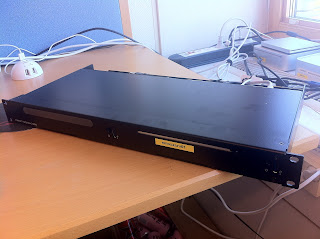Ok, so some more thoughts on Android (4.2.1) and iOS (6.1). One of the daily things I really miss in Android is the iOS feature of scrolling to the top when you tap the top of the screen (some applications also reloads the flow when you do that). When I read about this feature the first time I didn't think it was much to the world but apparently I use it a lot. Another daily thing is notifications. The notification center in Android beats iOS' Notification Center hands down. For one thing there's two drop down notification lists in Android; one for more system related things and one for more application related things. Another advantage in Android is that it's possible to remove single notifications, in iOS only all notifications for a certain application. On the other hand in iOS you can remove all notifications from, say, FaceBook. That's not possible in Android. On the third hand in Android it's possible to remove all notificaitons (except for permanent notifications from some apps like some system apps or weather apps that, if you so wish can have a permanent notificaitons there, e. g. CPU usage or the temperature and sunnyness).
To continue the theme of daily often used parts of the system - keyboards. The iOS keyboard is nice and beats the the standard keyboard in Android. Being easier to customize to a bad state Android is, well, easier to customize which means that it's possible to, e. g. replace the not so good standard keyboard. One such keyboard that seems very nice is SwiftKey 3. I have only used it for a while and not near to use it to it's full potential but it's so much better at suggesting words (even in Swedish) than iOS (where word suggestion and correction is a separate feature from the keyboard) that it's actually useful (I usually shuts down all similar features). For one thing it suggests three words instead of one and it also show the words at the top of keyboard instead of in the text wich makes it easy to choose the second or third suggestion. Another thing I like is that one extra character per key is actually printed on the key similar to many physical keyboards. This makes it easier to use less common characters without switiching to some other layout of the keyboard. It also has some unusual, but good I think, layouts. One such is when you tap the key for bringing forward numbers is that they sit to the left as a num pad (in a square instead of a line). A feature from iOS I miss though is the builtin text expanding feature where you can define a short sequence of characters which fils in a longer or more complex sequence, like brb -> be right back or frt -> <\,/\,~~
There's two of these daily often used features where the iPad/iOS wins over the Nexus 7/Android and that's the possibility to quickly lock orientation of the screen with a small physical button (or if you prefer, mute the device) and that the switch between portrait mode and landscape mode is much faster on my iPad 2 then the Nexus 7.
The administration of BlueTooth is much better in Android, there you can disable (without forgetting the paired device) single devices, for example my physical keyboard but not my headset while in iOS you can only switch BlueTooth on or off. This often means that all paired devices connects to the iPad/iPhone which isn't always what you wished for. The problem gets less with accessories like the Apple BlueTooth keyboard which can be sort of disconnected by hitting the eject key (which doesn't work in Android with an Apple keyboard).
I'm still struggling with finding applications for all the ways I use my iPad for my Nexus 7. Some are obvious like the list in my last post which exists in both eco systems but for amny thing you have to find equivalents and that requires some work and some money. So far I'm short of applications for:
* Flow chart creation
* Podcast downloading, sorting and listening (doesn't matter much since I do that 98% on my smartphone)
* PDF editing both annotating typed text and handwritten text/sketches
* Hand writing (wrist protection needed) and sketching
Hand writing and sketching and most of all wrist protection seems to be one of the areas where Android still is way behind iOS. Another seems to be digital magazines.

